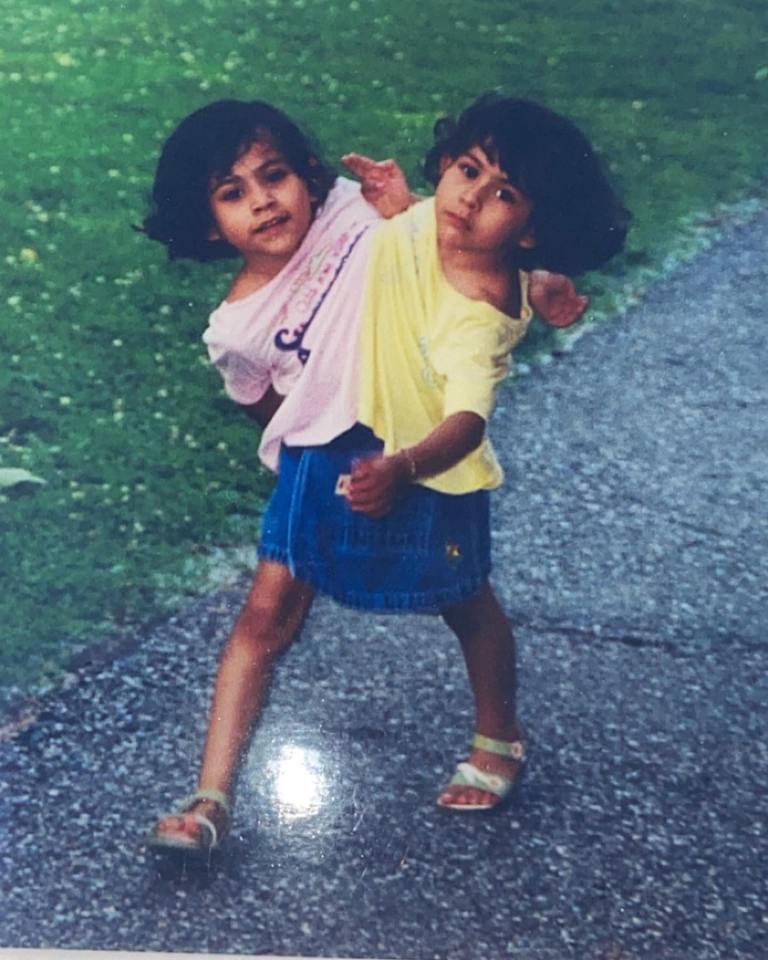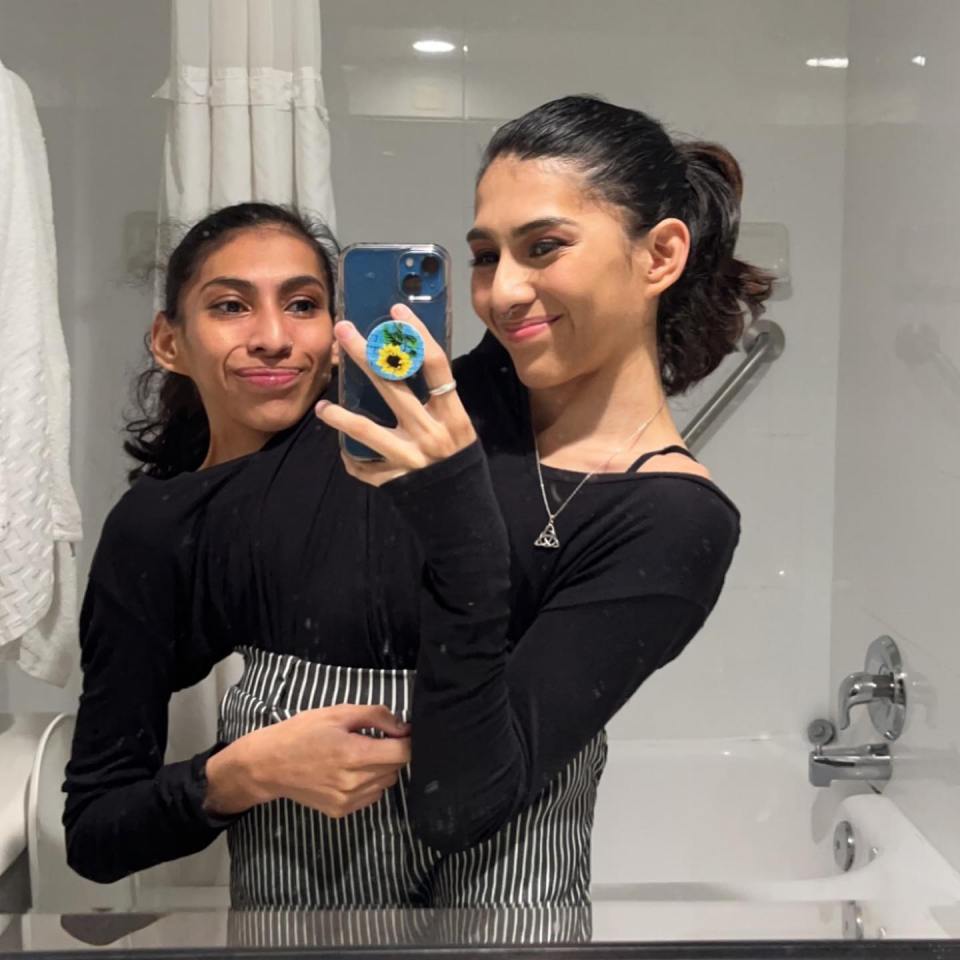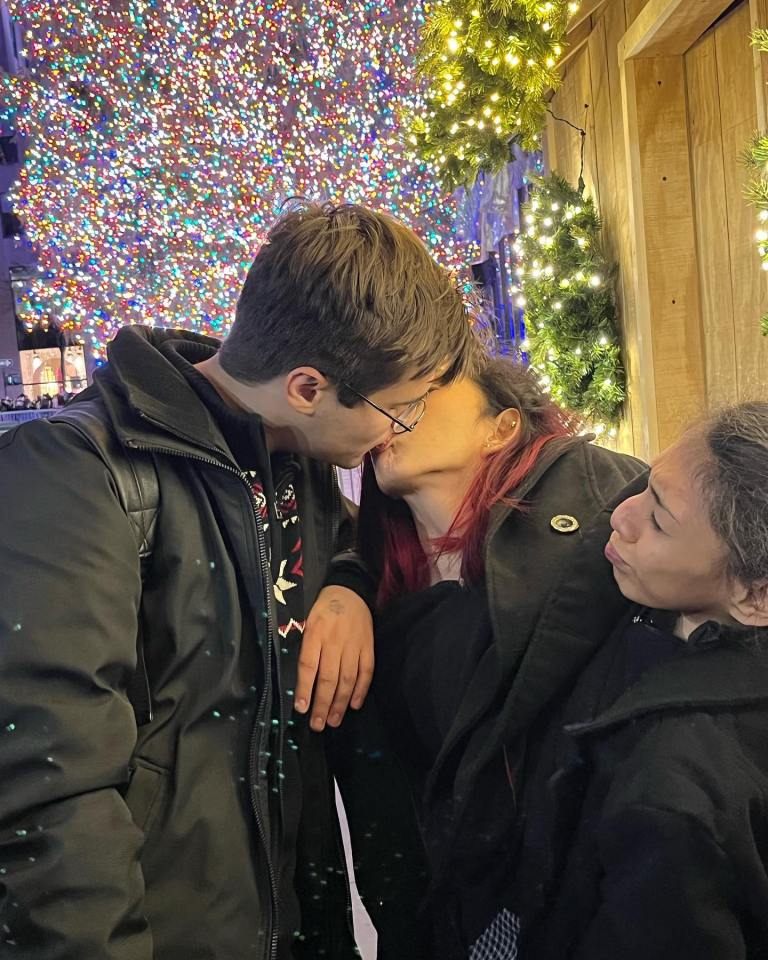Conjoined Twin Carmen Andrade Marries Longtime Boyfriend Daniel McCormack

Conjoined twins have always captured the world’s attention, not because of curiosity alone, but because their lives raise profound questions about identity, independence, and the meaning of human connection. Among the most well-known today are Carmen and Lupita Andrade, 23-year-old sisters whose story has touched millions across social media. Born in Mexico and raised in the United States, the sisters are inseparable in every sense of the word — physically joined at the torso, sharing one body below the chest, yet undeniably two independent individuals.
In 2024, their extraordinary journey reached a new milestone when Carmen married her longtime boyfriend, Daniel McCormack. For many, it was a surprising moment; for those who understand Carmen and Lupita’s story, it was a deeply beautiful and natural progression of a life they’ve always lived with honesty, courage, and an unwavering sense of self.
Growing up conjoined: two minds, two identities, one shared body
Carmen and Lupita belong to one of the rarest forms of conjoined twinning known as dicephalic parapagus. They each have their own head, their own brain, and their own upper body, but they share a lower torso, including a single reproductive system, a single set of hips, two legs (one controlled by each sister), a shared bloodstream, and several internal organs. Most babies born in their condition do not survive infancy, making their long and healthy lives extraordinary in themselves.
From the moment they were born, the sisters were treated not as medical anomalies, but as miracles in their small hometown. When they moved to the United States at the age of two, they grew up attending school, making friends, and learning to navigate a world built for bodies that looked nothing like theirs.
As they grew older, they developed different personalities, different interests, and different emotional worlds. Carmen is talkative, direct, socially bold. Lupita is quieter, thoughtful, more introverted — and proudly asexual. What they share, however, is an unshakeable bond and a remarkable ability to adapt. Every challenge life presented them, they found a way to face together.

Answering the world’s questions: a viral Q&A that changed how people see them
Because of their unique situation, Carmen and Lupita often experience intrusive questions from strangers — some curious, some inappropriate, some simply insensitive. To address these questions on their own terms, the sisters filmed a candid Q&A video on TikTok. In it, they answered everything people were too shy, too fascinated, or too ill-mannered to ask directly.
The sisters explained how, despite sharing a body, they are very much two separate people. They do not share thoughts. They do not share emotions. They can sleep at different times, experience hunger at different times, and get tired at different times.
“We have two different brains,” Carmen said simply. “One of us can be awake while the other sleeps.”
Movement, however, requires teamwork. Each sister controls one leg, and years of practice have made them experts at coordinating their steps. Carmen also happens to control the right leg — the one used for operating car pedals — which is why she is the one who drives when they go out.
Medical questions also came up in the Q&A. One of the most common was whether both of them get drunk if only one drinks alcohol. The answer is yes — because they share the same bloodstream. But when it comes to eating, things become more complex. Each has her own stomach, so they feel full or hungry at their own pace.
Some questions cut deeper, though, touching on illness and mortality. The sisters openly explained that because of their shared circulatory system, if one of them develops sepsis, the other could die within hours. It is a harsh but real part of their lives. Yet Carmen responded with a simple truth:
“We’re not dead. So why does everyone always ask that?”

Carmen and Daniel: a love story shaped by honesty and respect
Perhaps the question the world asks most often is how romantic relationships work. Carmen has been in a relationship with Daniel for years, and their love is built on communication, trust, and emotional maturity — traits that any couple, conjoined or not, must rely on.
Carmen has always been clear: “He is dating me, not Lupita.”
Lupita, who is asexual and uninterested in romantic relationships, has no conflict with Carmen’s love life. In fact, she and Daniel have become close friends. Carmen often jokes that on nights when Daniel comes over, she is the one who falls asleep first while Daniel and Lupita stay up talking.
“It’s funny,” Carmen said, “because I usually stay up later than Lupita. But when Daniel sleeps over, I fall asleep fast — and he stays up talking with her.”
It might seem unusual from the outside, but for them, the arrangement is natural and comfortable. They live in harmony because each person respects the boundaries and emotional needs of the others.
When it comes to intimacy, Carmen has spoken carefully and respectfully about the subject. Because they share reproductive organs, their private lives are impossible to separate physically. They also both suffer from endometriosis, which causes chronic pelvic pain. For both medical and personal reasons, Carmen has shared that she and Daniel do not plan to have children — something all three of them agree on wholeheartedly.

Why separation is not an option — and not a desire
Throughout their lives, doctors have debated whether separation surgery could ever be possible. The truth is simple: it cannot. The sisters share too many essential organs and structures. Attempting separation would almost certainly kill one or both of them.
But more importantly, Carmen and Lupita do not want to be separated.
“This is all we’ve ever known,” Lupita once said. “We don’t miss independence because we have never lived separately.”
Rather than viewing their condition as something to fix, they have embraced it as part of who they are. They have created routines that allow them personal space when they need it — Carmen using her laptop for schoolwork, Lupita listening to music with headphones, each mentally drifting into her own world while sharing the same physical one.

Understanding conjoined twins: a rare medical phenomenon
Conjoined twinning occurs in roughly one out of every 50,000 to 100,000 births. It happens when a developing embryo only partially divides, leaving two babies physically connected. Depending on where the bodies are fused, twins may share major organs or only skin and bone.
Dicephalic parapagus, the form of twinning Carmen and Lupita have, is among the rarest and most dangerous. Two heads, two spines, but one torso, one pelvis, and one set of organs below the waist. Most twins with this condition do not survive childbirth.
Carmen and Lupita’s survival into adulthood is statistically astonishing — and their ability to thrive even more so.
A life built on joy, resilience, and choosing their own happiness
Despite the challenges of their physical condition, Carmen and Lupita have never let it define the limits of their lives. They go to school, enjoy friendships, share inside jokes, argue like any sisters do, and create content online to educate others about their lives.
Most importantly, they choose happiness.
They choose laughter.
They choose comfort.
They choose honesty.
They choose to live as they are — without apology and without fear.
Their strength is not in overcoming their condition, but in embracing it.

A wedding that became a symbol of love in all its forms
When Carmen walked down the aisle with Daniel, Lupita walked beside her — not as an observer, but as an inseparable part of who she is. It was not a wedding of two people, nor three. It was a celebration of a life built on understanding, patience, and unconditional love.
Carmen gained a husband.
Daniel gained a partner.
Lupita gained a brother-in-law and kept her sister exactly as she has always been.
Their wedding was not unusual — it was profoundly human. And through it, Carmen and Lupita reminded the world that happiness does not need to fit a mold. Love does not need to look like anyone else’s love.
They have shown the world that life does not have to be ordinary to be beautiful. It simply has to be real.











